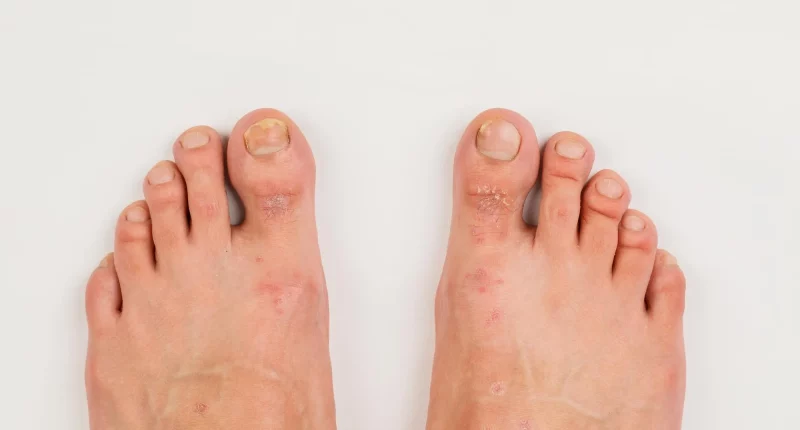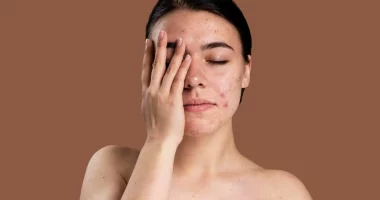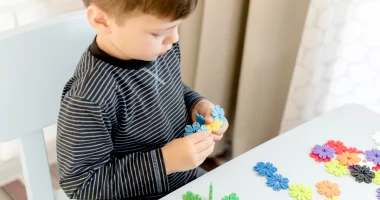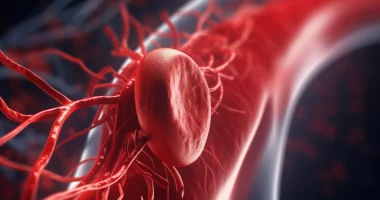Chilblains, also called pernio or perniosis, are tiny, itchy bumps that appear on the skin after being exposed to cold temperatures. Initially, they are not painful, but over time they can start to hurt. Chilblains are a type of acral ulcer, which means they occur on the extremities of the body, like the nose, ears, fingers, and toes. These areas are particularly susceptible to cold weather and poor circulation, leading to the formation of these uncomfortable swellings.
What is it?
Chilblains are tiny, itchy, and sometimes painful swellings that occur on the skin after exposure to damp and cold conditions. Researchers don’t know correctly what leads to chilblains, but few studies suggest they are a kind of blood vessel problem that happens in a specific area of the body. This condition seems to occur in individuals who are predisposed to it when they are in contact with cold weather.
When get contact with the damp and cold, tiny blood vessels in the skin can become damaged. This results in itching, redness, inflammation, and sometimes blisters. These symptoms usually occur on the fingers, toes, nose, and ears.
Chilblains are most typically seen in females, elder people, and in children. People who are very thin might have a higher chance of developing chilblains.
Interventions for chilblains typically involve topical medications and remedies, which are typically effective in relieving symptoms and allowing the individual to recover fully within two weeks. However, if chilblains are left unmedicated, complications like cracked or broken skin, skin ulcers, and infections can occur.
To prevent chilblains, suspectable individuals should dress warmly and try to avoid exposure to cold as high as possible. Keeping the body warm and dry can significantly decrease the risk of developing chilblains.
Symptoms
This condition usually happens shortly after being exposed to cold weather. The symptoms often worsen when the affected person moves into a warmer environment.
Chilblains typically cause an itching and burning sensation in the extremities, like the nose, ears, feet, and hands. The skin in the affected area might modify color, turning to dark blue from red, and may become inflamed and swollen. In some rare cases, sores and blisters may also develop.
Healthcare providers generally advise that the symptoms and signs of chilblains will disappear on their own within two weeks, provided the patient stays away from further contact with the cold. In rare instances, the recovery process may take several months.
Causes and Risk Factors
When exposed to cold, our blood vessels are small to conserve heat. When we return to a warmer environment, the vessels of blood increase again. For a few individuals, this rapid change causes blood to discharge from the blood vessels, leading to inflammation and the symptoms of chilblains, particularly if the transition from cold to heat is sudden.
Certain clusters of individuals are more likely to develop chilblains when in contact with cold conditions. These include people who have family members with a history of chilblains, individuals with problems of circulation, and those with lupus. Individuals living in homes that are draughty and poorly insulated are also at a higher risk. Smokers, females, underweight persons, and individuals with Raynaud’s disease are more susceptible to chilblains as well.
Complications
Chilblains can sometimes cause complications like skin ulcers, infections, and scarring. These issues are generally associated with a basic illness or condition.
In a few episodes, there can be lasting discoloration of the impacted area. To avoid these complications, it’s important not to scratch or rub the skin, which can assist prevent further damage and promote healing.
Diagnosis
Diagnosing chilblains is usually simple. If you have symptoms like red, itchy, or swollen skin after being in contact with the cold, a healthcare provider can easily determine chilblains.
However, the healthcare provider will also want to make sure that your symptoms are not caused by other conditions like lupus, erythromelalgia, Raynaud’s phenomenon, or ischemia. To eliminate these other conditions, the healthcare provider might enquire about your medical history and examine your skin carefully. In rare cases, if the diagnosis is unclear, the healthcare provider might take a small sample of your skin (a biopsy) to look at it more closely under a microscope.
Treatment
In the past, treatments for chilblains included remedies like fennel root and wine, but these are no longer recommended.
For chilblains that have not grown into skin ulcers or an infection, over-the-counter medications from a pharmacy can be effective. As per the British National Health Service guidance, individuals often see good results after the application of a combination of friar’s balsam and a tincture of iodine. It is advisable to consult a healthcare provider before using this treatment.
Corticosteroid cream can help with signs of itching and inflammation. If the epidermis is cracked, it is important to see a healthcare provider. Corticosteroid cream can easily be available online or over the counter.
For more continuous cases, a healthcare provider might prescribe vasodilators like diltiazem or nifedipine. Few people believe that calcium and Vitamin D supplements can ease signs, but this has not been proven by science.
Home Care
To ease the symptoms of chilblains at home, you can:
- Keep the skin warm and dry.
- Rewarm the skin softly without massaging, rubbing, or applying direct heat.
- Apply cream to reduce itching.
- To decrease the chance of infection, use antiseptic to sanitize the skin
- Avoid scratching the affected area.
These steps can help manage chilblains and prevent further complications.
Prevention
It’s important to take several measures, especially during cold weather. Dressing appropriately is key; this includes wearing footwear like insulated shoes and thick socks, as well as a hat, gloves, and a scarf. These clothing items protect your ears, hands, and feet. To shield your nose, consider wrapping a scarf over the face.
Improving circulation can also help prevent chilblains. Staying active and keeping your blood flowing helps maintain good circulation. For those who are particularly susceptible, it is best to avoid contact with cold environments as high as possible.
Before going out into the cold, warming up your socks and shoes on a radiator can be beneficial. Additionally, avoid wearing tight shoes, as they can restrict blood flow and exacerbate the risk of chilblains.
When transitioning from the cold to a warmer environment, try to avoid unexpected changes in temperature. Gradually warming up is better for preventing chilblains. Regular physical activity around four times per week, helps keep your circulation in good shape and can decrease the risk of developing chilblains.
Summary
Chilblains are tiny, itchy swellings on the skin caused by exposure to cold. They typically appear on the extremities and can become painful. To prevent chilblains, dress warmly, keep active to improve circulation, and avoid unexpected changes in temperature. Treatments include over-the-counter medications, corticosteroid creams, and in persistent cases, vasodilators. Home care involves gently rewarming the skin, keeping it dry and warm, and avoiding scratching. Proper prevention and treatment can help manage and reduce the risk of complications.
External links








